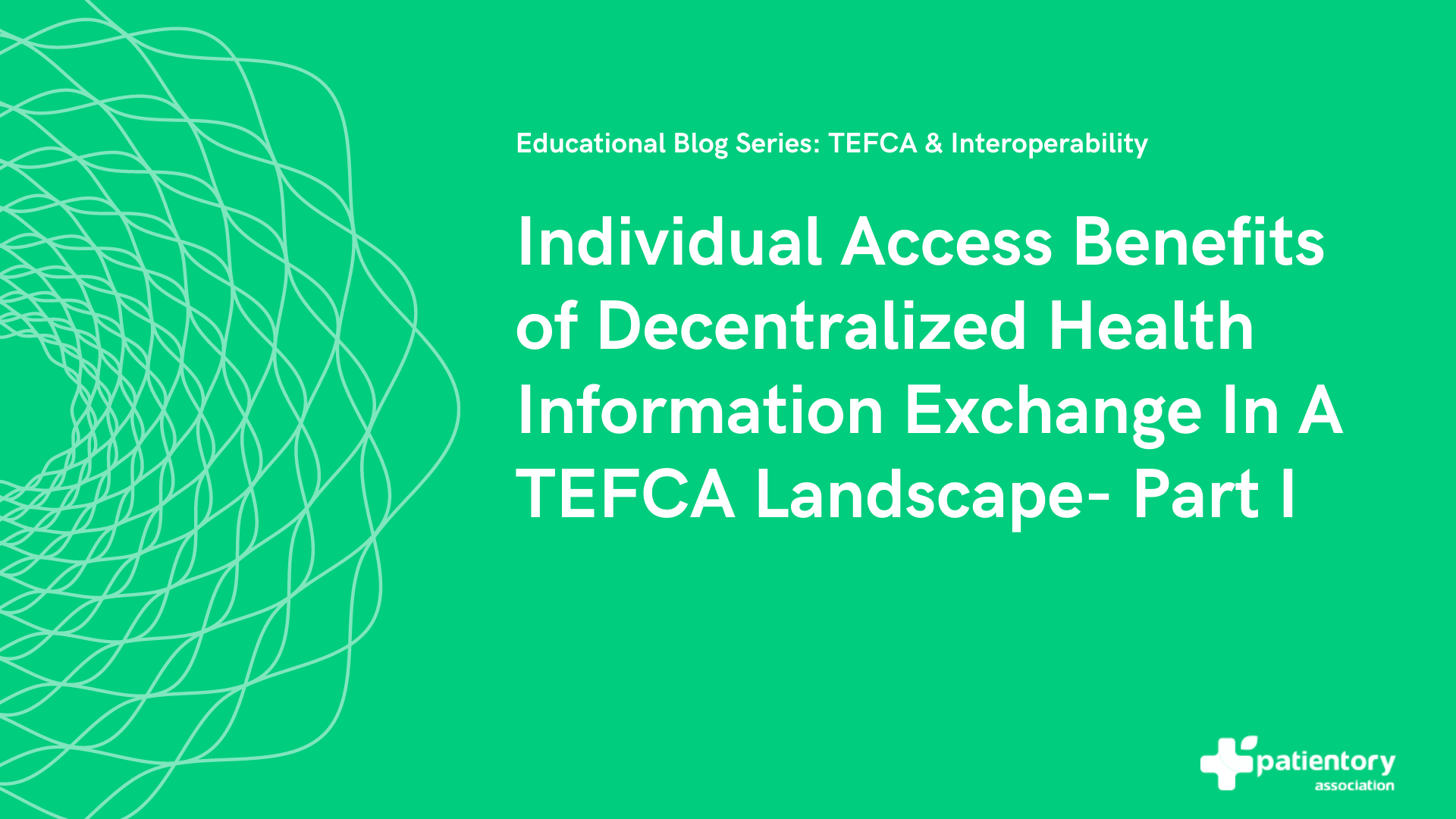The current status of centralized health data exchange is conglomerated into the national E-Health Exchange which represents all 50 states and over 14 billion transactions per year. The vast majority of these transactions are query and retrieval which as a result of the FDA these transactions are now moving towards FHIR R4. The need for the Trusted Exchange Framework Common Agreement (TEFCA), a byproduct of the 21at Century Cures Act signed into law in 2016, provides a framework for interoperability cooperation and standard operating procedures to ensure all types of health information exchange purposes can occur. These use case queries of health information include but are not limited to: individual access, payments, treatment, public health, etc. The Patientory Association’s focus is championing utility for individual access to ensure innovation and that continued value drivers can beneficially coexist within the ecosystem.
Fortunately, many states have already accommodated a longitudinal patient record which can facilitate the retrieval of patients records for participants. However, there are many challenges that exist within this framework which is predominantly focused on Enterprise to Enterprise transfer of healthcare information. The required fields still need to be audited and ensure that the data moving across the production is of high value quality.
The current shortcomings of the healthcare information exchange system today in the United States and around the world are either non-existent or limited in portability and identification. Particularly in national data exchanges patient matches still prove difficult limiting the continuity of care. This provides opportunity for innovative technologies such as decentralized networks to bring forth the usability of this information for industry.
Health Information Exchange (the verb) has been fraught with patient identity issues. Specificity, the usability, timeliness, manner of transmission, workflow integration and so on – the list of barriers exceeds the list of accomplishments on many fronts, but the foundational layer of digitized health data was brought forward by the EHR incentive program rolled out in the 2010s. This program encouraged EHR adoption amongst the provider communities, supported by technical and training resources from Regional Extension Centers and sped forward with the more recent expansion of health data exchange requirements via 21st Century Cures and TEFCA. These regulatory instruments have provided additional guardrails that are moving healthcare interoperability and standards adoption forward to reduce, remove, and eliminate a number of those barriers.
Still to be resolved are issues around patient, provider, and organizational identities. These are foundational components necessary to facilitate health information exchange and put data in the right place to enable the best possible care encounter for each patient (think personalized medicine). The future-forward interoperability framework will need the authority and ability to identify actors, create and deliver consent and allow for health information to be a participant in every exchange.
Organization Directory services for FHIR APIs and the like still need a home as well as a vetting authority to provide a trust framework for the consortia to be comfortable with making any exchange – patient identity with a consent mechanism that enables seamless and informed exchange also needs a home. Not to mention the need for an architecture that enables a ‘single patient identifier’ that can be shared by the patient with each of the care providers/organizations at the beginning of each encounter.
2022 E-health Week takeaways brought to the forefront the need for retail interoperability. FHIR will of course be the link allowing the ease of the portability of this information, especially since the passing of Data Liberation Day on October 6, 2022. It is imperative that consumers are the heart of interoperability; the individuals whose information is being recorded, reported and shared and this where decentralization can make a difference.

